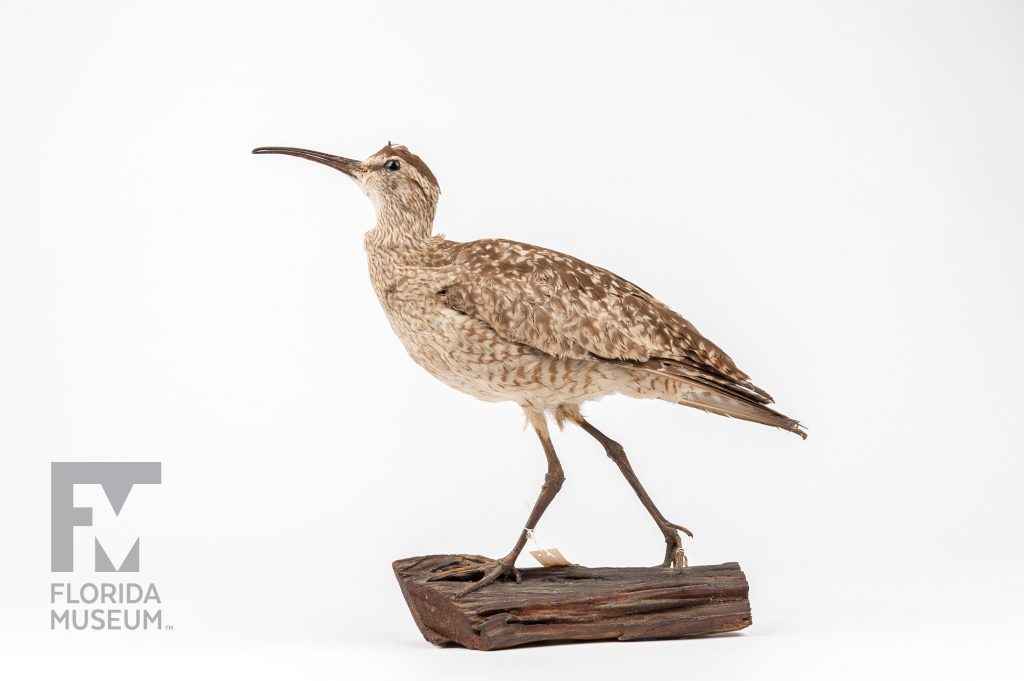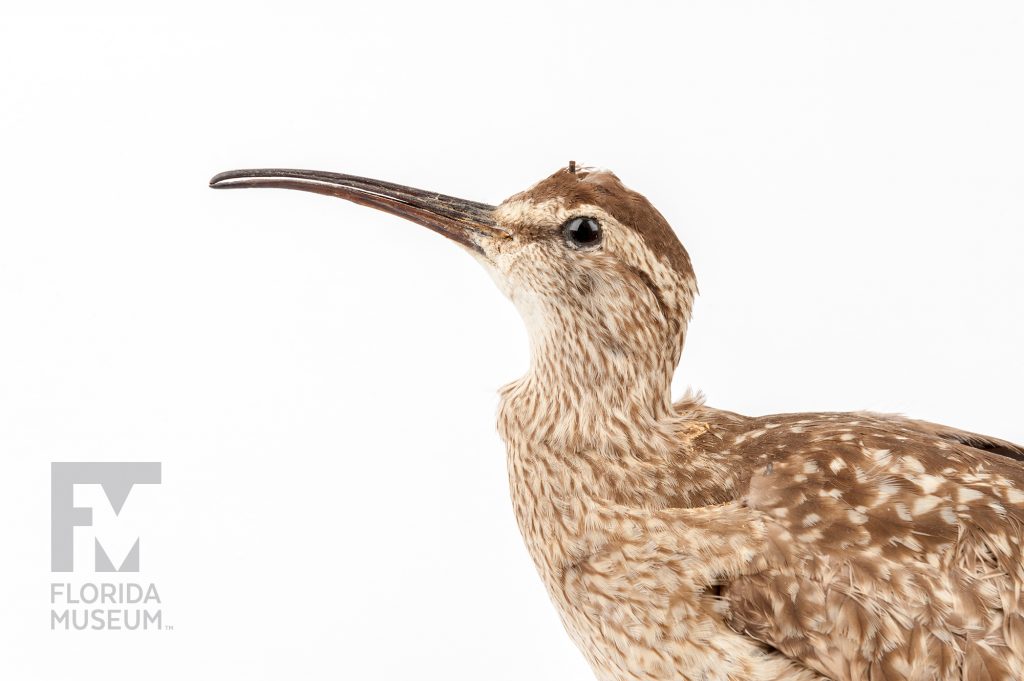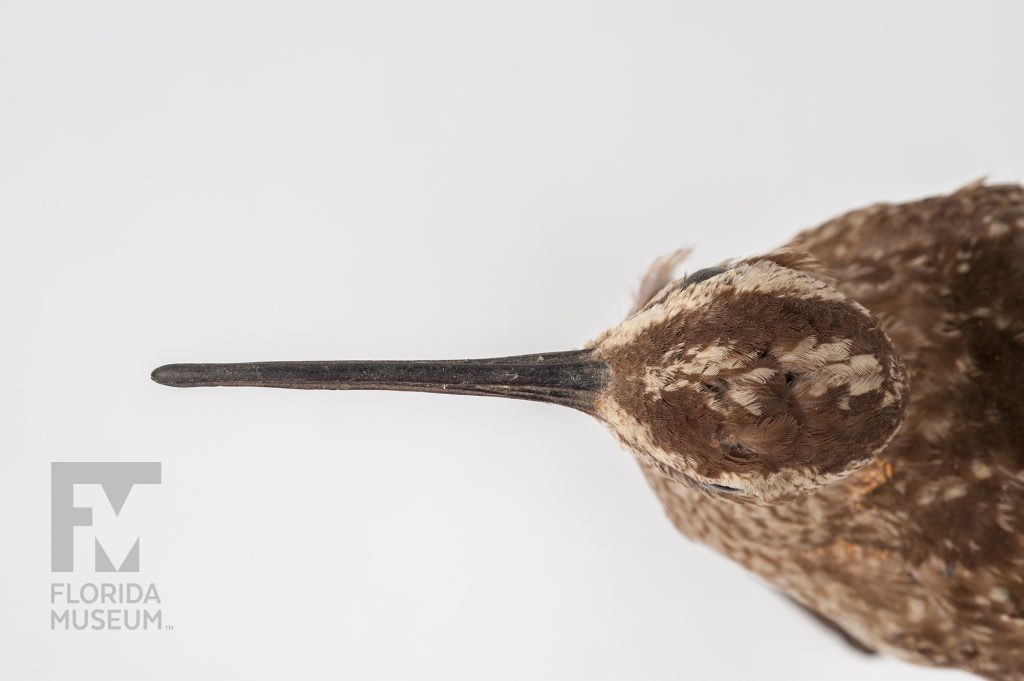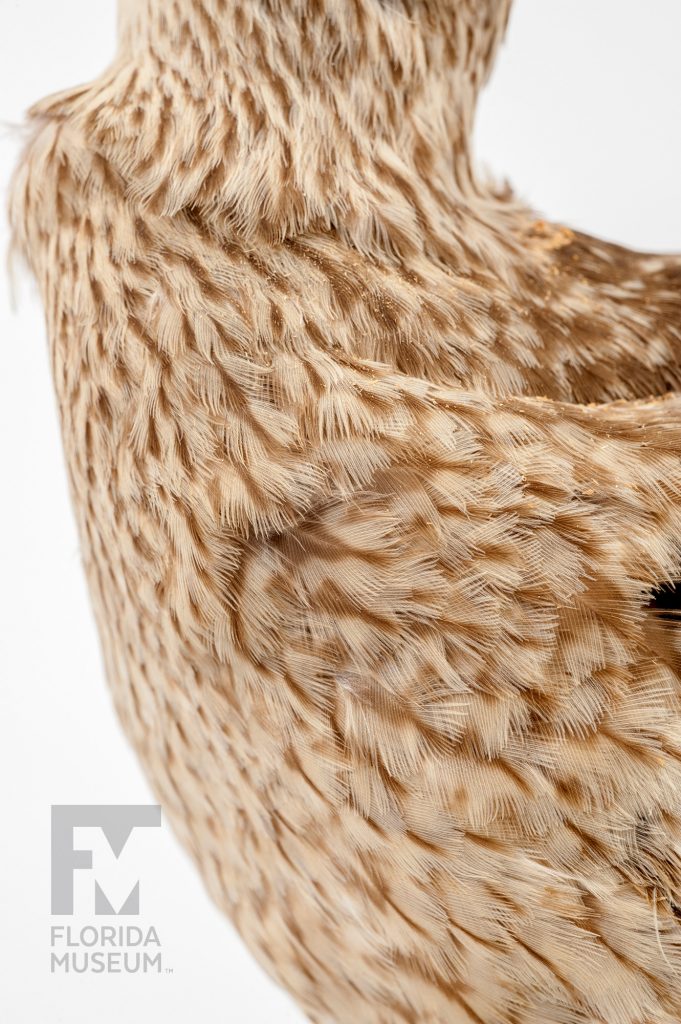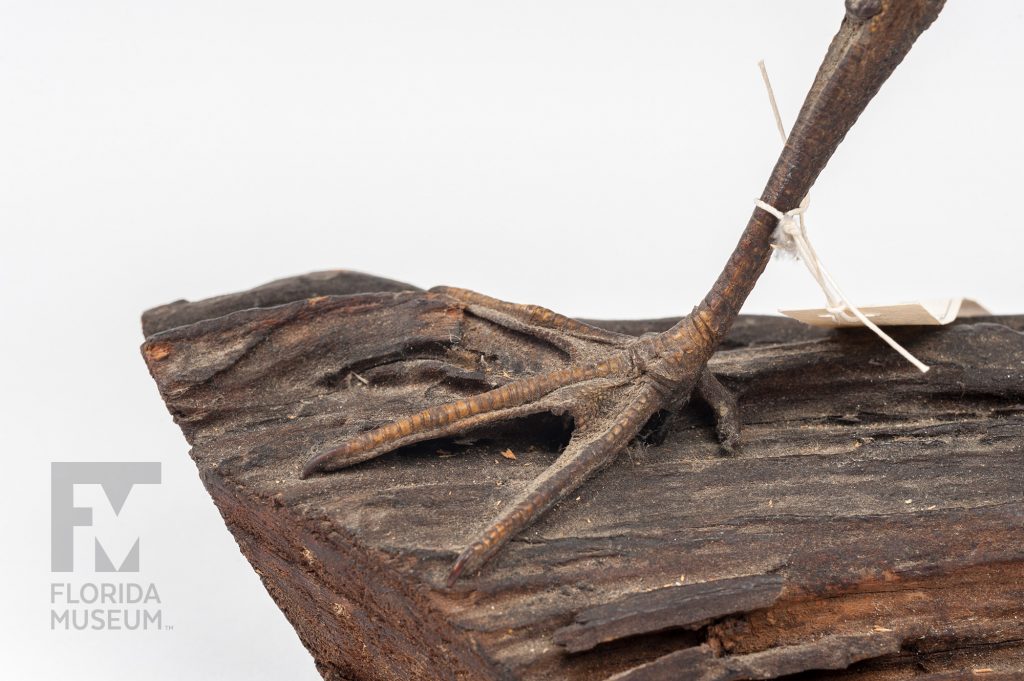The Eskimo Curlew traveled far, breeding in northern Canada and Alaska and wintering in southern South America. Hunting decimated Curlew populations during their spring migration through the U.S. No credible sightings have been reported since the early 1980s.
Summary
Eskimo Curlew (Numenius borealis)
From Newport Co., Rhode Island, Aug. 1898
Collection
Story
When Columbus reached the New World at the end of the 15th century, the Eskimo Curlew was among the most common shorebirds. It was thought that Columbus knew he was nearing land in the Western Atlantic when he spied these small Curlews heading south. They were extreme long-distance migrants, breeding on the tundra of northern Alaska and Canada and wintering on the Pampas of southern South America.
During the late 1800s large flocks of these shorebirds, fattened up for their long journeys, proved to be prize prey for hunters and they were shot by the millions. Their fall migration took them along the heavily settled Atlantic Seaboard and through the Caribbean. Their spring migration took them to the newly settled Midwest where market hunters were wiping out huge herds of buffalo and enormous flocks of Passenger Pigeons.
By the mid-20th century they were all but wiped out. The last verified occurrences were a bird photographed in Galveston, Texas, in 1962 and a bird shot in Barbados in 1963. There have been a few unverified reports since, but it now seems the bird is almost surely extinct.
The Eskimo Curlew’s plight illustrates the need to protect all portions of the species’ life cycle. Although the breeding and wintering habitats where the bird spends the majority of its time were little affected by human activities, almost all the hunting occurred at migration stops which led to the bird’s extinction.
Andy Kratter
Collection Manager, Ornithology*
Florida Museum of Natural History
Exhibit
On display Sept. 23, 2017-Jan. 7, 2018, Rare, Beautiful & Fascinating: 100 Years @FloridaMuseum celebrated the Museum’s rich history. Each Museum collection was asked to contribute its most interesting items and share the stories that make them special. Though the physical exhibit is closed, this companion website remains online, providing an opportunity to experience the Florida Museum’s most treasured specimens.
Exhibit Area: Extinction
Theme: Extinct Birds
 Want to see more? Explore more than 300 breathtaking color photos of plants, animals, fossils and cultural heritage materials from the Florida Museum of Natural History’s collections in the award-winning book All Things Beautiful available from the University Press of Florida.
Want to see more? Explore more than 300 breathtaking color photos of plants, animals, fossils and cultural heritage materials from the Florida Museum of Natural History’s collections in the award-winning book All Things Beautiful available from the University Press of Florida.
*This title was accurate at the time the exhibit was on display in 2017. Please visit the collection website to verify current staff and student information.
